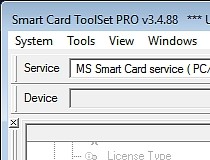

- SMART CARD TOOLSET 3.4 CERTIFICATE TEXT HOW TO
- SMART CARD TOOLSET 3.4 CERTIFICATE TEXT UPDATE
- SMART CARD TOOLSET 3.4 CERTIFICATE TEXT CODE
The certificate can be downloaded from the Microsoft site at:
SMART CARD TOOLSET 3.4 CERTIFICATE TEXT CODE
I’ve been looking for the Microsoft Code Signing certificate, and managed to locate it through Posted on NovemApCategories Uncategorized NTFS Match smartcard key with public key on keyring: gpg -card-status DESFireĭefaults, see.
SMART CARD TOOLSET 3.4 CERTIFICATE TEXT HOW TO
OpenPGP card driver How to use smartcards with GnuPG Using openssl to create a bitlocker certificate: # openssl req -new -x509 -out BitlockerAndEFS.cer -keyout BitlockerAndEFS.key -config nf -extensions req_extensions -days 1000
SMART CARD TOOLSET 3.4 CERTIFICATE TEXT UPDATE

Posted on NovemCategories Uncategorized Windows clusteringĭeleting old smart card keys certutil –delkey –csp "Microsoft Base Smart Card Crypto Provider" Ke圜ontainerNameĬertutil –key –csp "Microsoft Base Smart Card Crypto Provider" $rule = $rules.Create("MyNewRule",$olRuleType::OlRuleReceive) $inbox = $namespace.getDefaultFolder($olFolders::olFolderInbox) $namespace = $Outlook.GetNameSpace("mapi") $outlook = New-Object -ComObject outlook.application The only approach I’ve found is to script outlook to make the changes, see Īdd-Type -AssemblyName Exchange mailbox rules appear to only be accessible through Exchange Web Services from Exchange 2010 onwards. While looking into migrating mailboxes between completely separate Exchange systems I could not find a simple approach to moving mailbox rules for an Exchange 2007 system.


 0 kommentar(er)
0 kommentar(er)
